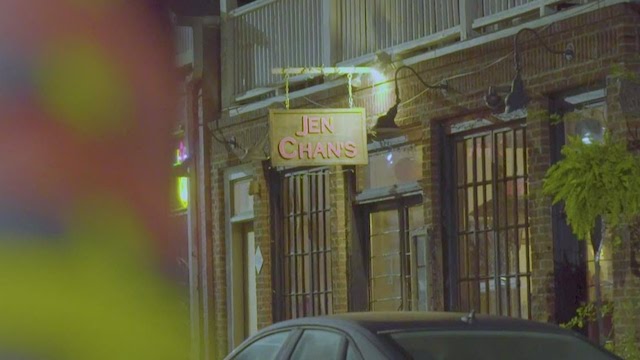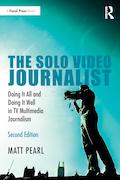We were all tested in 2020.
Every life was touched in some way by the COVID-19 pandemic, which remains a constant factor in our activities and decisions more than a year since it began. Video journalists faced a wave of limitations and restrictions as we attempted to stay safe while doing our jobs, in a year where our jobs felt more vital than ever.
I was reminded of this as I watched this year’s winners of the NPPA’s Best of Photojournalism awards for video photography and video editing.
Some were shot before the pandemic. Most were shot during. All reflected dedication to the craft of journalism and storytelling – with an extra dose of perseverance.
Here were five lessons I learned from five winning entries:
THE STORY: The Uprising, by Corinne Chin, Lauren Frohne, & Ramon Dompor (Seattle Times)
THE LESSON: Cover the macro and the micro.
After George Floyd was killed in late May, protests broke out across the country. So many visual journalists arrived on the scene and produced moving, powerful stories, often through the raw emotion on display. At a time of massive unrest and racial reckoning, these stories were essential in conveying the anger, heartbreak, and frustration of those in the middle.
I particularly appreciated those that found the big picture through the journeys of individuals.
That’s what this trio of Seattle Times photojournalists accomplish here. They cover the evolution of the protests in Seattle, from the days after Floyd’s death to the creation of the Capitol Hill Organized Protest (CHOP). But they deliver this narrative through the eyes of three protesters, each with distinct personal histories and outlooks, to show the micro in the midst of the macro.
THE STORY: At 91, she returned to Auschwitz with her family, one last time, by Lauren M. Schneiderman (Philadelphia Inquirer)
THE LESSON: Let moments breathe.
This story takes its time.
I often envy visual journalists who work for digital-first or traditional newspaper platforms, because they often don’t face limits in the lengths of their stories. And for stories like this, that’s a huge strength. Holocaust survivor Anneliese Nossbaum returns to the Auschwitz-Birkenau concentration camp, and visual journalist Lauren M. Schneiderman follows along and captures haunting moments throughout.
As a viewer, you feel like a member of Nossbaum’s family, along for this poignant trip with her loved ones. That’s largely because Nossbaum keeps the pace slow, holds important shots for as long as necessary, and evokes a contemplative spirit. In the process, she produces a beautiful testimony.
THE STORY: Thank God for what’s under the umbrellas, by Joe Little (KNSD-TV)
THE LESSON: Lean into a story’s energy – and the natural sound that elevates it.
If Schneiderman’s story succeeds because it breathes, this piece – by Joe Little – thrives by doing the opposite.
It flies.
But just as Schneiderman did, Little responded to the energy of the story. He tells the story of a handyman who creates picnic tables for restaurants who suddenly need to seat people outdoors. He leads with a staccato series of natural sounds, the perfect way to illustrate the bustle, focus, and enthusiasm of his main character.
In 90 seconds, Little shows how to work within the confines of the traditional local TV news runtime and produce a package his audience will remember.
THE STORY: Some Clown in Provo, by Peter Rosen (KSL-TV)
THE LESSON: When you face limits, get creative.
Music. Staged shots of newspapers. The hiring of college students to recite poems.
These all break the rules of traditional journalism.
But in this piece, they all work.
Peter Rosen of KSL-TV is one of the most innovative solo video journalists around. He consistently finds creative ways to deliver his stories.
And this year, we all needed a little jolt of creativity.
Watch what Rosen does here, injecting a playful spirit to a charming nugget of a story.
THE STORY: JenChan’s, by Matt Pearl (WXIA-TV)
THE LESSON: Don’t preemptively limit what you can achieve.
OK, this piece is mine.
I’ve done this column every year and never mentioned my own winning stories.
I’m doing so now to make an important point.
In the early months of the pandemic, I assumed I wouldn’t win any photography awards this year. Company restrictions meant I couldn’t clip a lavaliere microphone on anyone I interviewed. I needed to gather sound from six feet away. And I was not allowed to shoot anything indoors.
But after too many weeks of nothing but Zoom interviews, I resolved to dust off the camera and figure out a way.
I leaned on my photographic foundations but figured out pandemic-safe methods. I learned how to adjust my storytelling style to account for the new restrictions. And by year’s end, I produced the piece below, which took 1st place for Hard Photo Essay Edit. I’m especially proud of this award, and I’m grateful to have received the opportunity to tell the story that won it. And I’m glad I didn’t sell myself short. I pushed myself and adapted to our new world, just like so many in our field and beyond.
The Solo Video Journalist is available for purchase. You can find it on Amazon, Barnes & Noble, and the publisher’s web site.
Matt Pearl is the author of the Telling the Story blog and podcast. Feel free to comment below or e-mail Matt at matt@tellingthestoryblog.com. You can also follow Matt on Facebook, Twitter, and his web site, mattpearl.tv.

